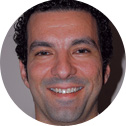
The European cash-equities stage, inflamed as it has become by competition in the wake of Markets in Financial Instruments Directive (MiFID), is already a little overcrowded. During the past 18 months, a slew of new, frequently indistinguishable trading venues have entered the marketplace with fierce public commotion and variable success.
These include Instinet-owned Chi-X Europe, widely regarded as runaway success, and NYFIX Euro Millennium, both of which have been operational for some time, while August 2008 brought the long-awaited take-off of bank-backed platform Turquoise. Nasdaq OMX Europe began operations in late September, and BATS Europe, whose US platform commands 10.6% of the market, launched on October 31. Waiting in the wings are Börse Berlin-owned Equiduct Trading and the Nordic contender Burgundy, while both the London Stock Exchange (LSE) and Knight Capital Group, a US-based agency broker, have unveiled plans to launch dark liquidity pools.
But while the spotlight has been very firmly fixed on the arrival of these new publicity-hungry contenders, little public discussion has been devoted to the often-inscrutable entities that will ultimately decide their fate: liquidity providers. For the success of these trading venues will be determined by their ability not only to wrestle established liquidity away from the incumbent exchanges, but also by how successful they are in attracting new liquidity provided by trading firms, whose names and trading strategies are largely unfamiliar to the European market.
Hailing principally from the US, these firms – comprising proprietary trading desks, hedge funds and brokerages – have played a quietly transformative role in their native markets, and are now eyeing Europe as their next destination. Many market-watchers believe that these firms, having fast gained a formidable presence in the US markets, will play a powerful role in determining not only who wins the battle for European liquidity, but the shape of European landscape in years to come.
Revising the roll-call
So who are these invisible firms? In answering this question, it pays to look closely at the investors behind two of the most successful upstart trading platforms launched to date. Take Chi-X Europe, which has secured about a 14% market share of the FTSE 100 stocks and BATS Trading, the third largest market in the US, as key examples. Beside what was once upon a time the familiar roll-call of blue-blooded Wall Street brands, including Merrill Lynch, Morgan Stanley and Citigroup, are some less recognisable names including Global Electronic Trading Company (GETCO), Lime Brokerage, Optiver, Tradebot and Wedbush Morgan Securities (WMS).
These firms and their publicity-shy peers and clients – which often hail from regions that would be described, at best, as peripheral to the world of global finance, including South Carolina, Kansas and Los Angeles – form part of a new wave of so-called ‘high frequency’ speed-sensitive traders that have come to dominate US equities in recent years. Frequently young, secretive, privately held and ambitious, the importance of these high-frequency trading firms, which may often number only six or seven people in size, is not to be underestimated. Rosenblatt Europe estimates that these firms collectively account for a staggering 50% to 60% of US equity trading volumes on an annual basis, according to Justin Schack, vice-president of the agency broker.
Edward Wedbush, president and CEO of Los Angeles-based WMS, which is among the largest independent brokerage firms in the US, knows better than most just how “huge”, as he puts it, such high frequency players have become in the US marketplace. WMS, which originally served as BATS Trading’s chief clearing agent, provides transaction, trading and clearing services to a broad range of statistical arbitrage traders and automated market makers. “Through computer-assisted trading, these clients provide the liquidity that is fundamental to the market,” he says. Few would anticipate that WMS, as a provider of execution services to these high-volume clients, has ranked as the number one liquidity provider to Nasdaq for the past three years.
Founded in 2001, New York-based Lime Brokerage has also built a business catering to the demanding requirements of these ever-important trading houses. Among the original three backers of BATS, Lime Brokerage, which also has a minority stake in the Chicago Board Options Exchange’s stock exchange, styles itself as a super high-tech agency broker. It caters to clients that, as the firm’s newly appointed CEO Jeff Wecker puts it, “are uniquely sensitive to speed of execution”. The firm executes hundreds of millions of shares a day on behalf of these clients, touching a sizeable 5% of all traded volumes in the US equities market daily.
Impressive though this may be, such volumes are small change compared with those pumped out by high-frequency players trading on their own account – GETCO being the most notable example. The low-profile, high-frequency automated market maker, which was an early investor in BATS Trading and a backer of Chi-X Europe, uses automated electronic systems to trade more than one billion shares a month, according to a 2006 Securities and Exchange Commission (SEC) filing.
Trading on such a vast scale, GETCO and its peers are believed to have played a fundamental role in reshaping the US equity market structures. But unlike many investment banks, the firm passionately eschews ego-driven, short-termist individualism of the sort that has traditionally been characteristic of City trading floors. “We believe that a low-ego, team-oriented culture fuels the kind of continuous innovation that is critical to our success,” says Dan Tierney, co-founder GETCO. Nevertheless, its rumoured market value gives cause for some self-satisfaction. In April 2007, General Atlantic, a private equity firm, purchased a 20% stake in GETCO in a deal that valued the firm somewhere in the region of $1bn to $1.5bn, according to The Wall Street Journal.
Maker taker model
Firms such as GETCO or leading Dutch market maker Optiver, another Chi-X backer, add liquidity to the markets by using high-speed algorithms to flood venues with bid and offer orders on particular stocks. Although such firms profit on the spread – which may often total a mere penny or less – the success of this strategy depends largely on the so-called ‘maker taker’ fee model which is increasingly being adopted by US and new European execution venues in order to attract liquidity. Under this fee structure, liquidity providers (that is firms that either post an order to buy or sell at a fixed price) are offered a rebate if their quotes are met. Chi-X Europe, for example, pays a 0.2 basis point (bp) rebate to firms that commit to posting quotes on its platform, while it charges takers of liquidity (firms that hit these orders) 0.3bp.
|
| High-frequency market makers collect this rebate hundreds of thousands of times a day. “The rebate is a big proportion of the profit and loss that they drive from that market activity,” says Dmitri Galinov, a director at Credit Suisse Advanced Execution Services. |
Beyond the speed of thought
Founded in 1999 by technology enthusiast Dave Cummings, Tradebot is regarded as one of the original ‘black-box’ trading powerhouses. Mr Cummings, the company’s CEO, also founded BATS Trading, of which he is former CEO and in which he owns a major stake. Like BATS, for which in the words of one source, outsourcing is regarded as “blasphemy”, Tradebot designs and builds all its technology in house. The firm is an active liquidity provider on the major US exchanges and electronic crossing networks, including Nasdaq, NYSE Arca, BATS and Direct Edge, where it moves in and out of stocks at breakneck speed. For Tradebot, as with the above firms, the fundamentals of a stock are rarely, if ever, relevant.
Instead, the key is low latency. For firms such as Optiver and Tradebot, speed is not just everything: it is the only thing. Take Nasdaq, one of the faster US markets. Every time the exchange receives an updated quote, explains Chris Concannon, executive vice-president, transaction services for Nasdaq OMX Group, more than five firms are able to receive that information and update their quotes accordingly in about half a millisecond. “They are now first in line for execution. So when the next incoming order comes in, the first of those five firms gets it first: they’ve just got priority over the entire market at that price,” he says. By the time it gets to the fifth firm, the spread will have moved.
Low latency is therefore about being at the front of the queue. Firms such as Tradebot are able to send and receive orders in less than one-thousandth of a second: put another way, they are able to trade about 200 times faster than the average speed of thought. In a bear market, these micro-fractions matter more than ever: the potential value of a millisecond was vividly demonstrated during a particularly bloody period on Black Friday, October 10, 2008, when the UK market plummeted at a hair-raising £250m ($370.5m) a second. When selling in such conditions, a millisecond matters. For some large firms, a one-millisecond advantage could even be worth up to $100m a year.
At the firewall
But it is not enough for the firms themselves to be fast. Once they are at the exchange’s firewall, they are dependent on the speed of the exchange or execution venue itself. Because the fastest trading firms can do the most business on the speediest exchanges, the latter are in a position to garner the most liquidity from this new wave of players. Hence the unseemly cat fight that has unfolded in Europe regarding low-latency statistics: for firms such as BATS and Chi-X Europe, technology capability has formed the central plank of their marketing campaigns as they hope to court this new breed of trader – a pursuit which, at least in the case of Chi-X, has so far proved successful.
Meanwhile, incumbent platforms, such as the LSE, are trying to catch up. According to its own figures, BATS’ statistical average latency – which it defines as the time from which an order hits its firewall until the time it goes back through its firewall – is 444 microseconds, that is 444 millionths of a second. Compare this to the LSE, whose latency is at just under five milliseconds, or five thousandths of a second. For the incumbents, however, there might yet be a saving grace. Trading at high speed and on a grand scale is a truly transformative exercise, which tends to incubate more overall volume. In the US, says Mr Schack, the volumes “exploded” when the high-frequency players pitched up.
Transformation does not end here. Many of the new breed of traders, in particular GETCO, Optiver, Tradebot and Sun Trading, regard themselves as positive (albeit profitable) forces in the equities markets. By deepening liquidity, they serve to reduce the average spread between the bid and offer on the equities that they trade, thereby making the markets more efficient for retail and institutional investors. In its 2006 letter to the SEC, GETCO made this point quite explicitly. Between 2000 and 2006, the spread on Microsoft (a popular liquid stock for such firms) tightened from $0.03 to $0.01, a contraction that equates to a $300m saving in a trading year of 240 days, wrote Stephen Schuler, GETCO’s co-founder and CEO. Indeed, GETCO’s goal, says Mr Tierney, “is to constantly improve our processes, create greater efficiencies in the marketplace, and reduce the cost of risk transfer for all investors”.
But this also equates to decreased profitability on the spread. This would make Europe, as a far less efficient market, an ever-attractive prospect to such firms.
|
| Mark Hemsley, CEO of BATS Europe, says that the European landscape, in terms of technology capability, the move towards the ‘maker taker’ model, and the decreased cost of market access, has become more suited to their strategies. “Now these types of traders have got a natural place in which to trade,” he adds. |
|
| Furthermore, says Bradley Duke, director, head of institutional, electronic sales in Europe at Knight Capital Group, another major liquidity provider to the US market, the wideness of the European spreads presents a huge opportunity for these firms. “They are bringing to Europe a range of battle-tested algorithms and repurposing them for the European landscape,” he adds. |
From hi to lo
Lime Brokerage is one such player. Mr Wecker believes that the climate in Europe is “ripe” for its service offering and the firm is “looking quite seriously at the European marketplace”, he continues. This interest stems, for the most part, from client demand. “We would not move into a marketplace if we didn’t have significant customer interests to be active in that marketplace. The changes in the European market structure are so profound that it is creating new opportunities, particularly for smart electronic investors,” he says.
Several other firms are poised to make the jump, while others, including GETCO, Citadel and Sun Trading, are already making their presence felt. Steve Grob, director of strategy at trading connectivity provider Fidessa, which recently launched a fragmentation index in order to track the shifting behaviour of European liquidity, says there is evidence that the volumes appearing on new venues is a result of growing statistical arbitrage activity. Certainly the LSE, which has recently altered its tariff structure to attract more algorithmic traders, likes to declare that it has benefited from a growth in arbitrage trading. The beleaguered Deutsche Börse has reported a similar effect.
For some, however, this looks like an expedient argument. As one source remarks: “If I were in their position, I would say the same too.” Few could argue convincingly that the pressure on Europe’s somewhat flabby incumbents is not growing. November, for example, brought what has widely been regarded as the first casualty of the trading platform battle, when SIX Group, operator of the Swiss exchange, announced that it is to shut down SWX Europe, its London-based blue-chip market, in order to consolidate its operations on its Zurich platform. Meanwhile, the untimely collapse of Lehman Brothers may have badly wounded the LSE’s defensive move to launch Baikal, a European dark pool unveiled in June 2007, for which the late investment bank was to act as a key technology provider.
The LSE’s difficulties underline more broadly just how important the new breed of US-led traders may be to the ever-thirsty European landscape in the wake of the financial crisis. As the embattled investment banking community finds itself desperately short of capital, the once free-flowing broker extended leverage, which has served to bloat cash equities trading volumes over the past few years, grows ever-scarcer. This situation has not been helped by the reduced appetite for risk demonstrated by many bulge-bracket banks, a trend that reportedly led JPMorgan Chase to scrap its 80-strong global standalone prop desk in November. By contrast, many high-frequency firms, due to the nature and speed of their trading strategies, remain largely undeterred by extreme volatility of the type witnessed in recent months and, in some instances, have found it to their advantage, says Lime Brokerage’s Mr Wecker.
Mindful of this shifting power base, both the LSE and Euronext are reportedly making strenuous efforts to engage with a number of Chicago-based high-frequency market makers, in an attempt to bring their liquidity onto their markets. This strategy may yet prove successful. For a number of US players, Europe’s exchanges certainly seem to hold some appeal, although firms such as WMS are looking further afield to Europe’s emerging eastern contenders. WMS, which is not a member of the LSE, is in the process of joining the intensely ambitious Warsaw Stock Exchange. The US brokerage was drawn to the Polish trading venue by what Edward Wedbush describes as its “aggressive use of technology” and the expectation that high-frequency electronic trading is due to take off in the region in the near future.
Research by Tony Kirby, co-chair of industry association Best Execution Working Group, indicates that this prediction is well placed: “The hedge fund market makers have a very strong appetite to interact with the new multilateral trading facilities – particularly those in which they maintain a stake.” His findings also suggest that the ratio of this type of ‘lo-touch’ to ‘hi-touch’ trading in Europe will increase from a 30-70 split in 2008 to reach almost a 40-60 split by 2010, with just less than one-third of European liquidity supplied by high-frequency, ‘lo-touch’ trail-blazers.
Uncertain survival
Yet, the extent to which these US high-frequency firms can succeed in the tangled European market remains uncertain. Bob Fuller, former CEO of Equiduct and now CEO of Exchange Axis, a neutral virtual broker, warns that Europe’s intricate clearing and settlement infrastructure may yet trip up US firms entering the European marketplace. Unlike in the US, where the Depository Trust and Clearing Corporation (DTCC) acts as the single central clearing counterparty (CCP) for all equities transactions on all trading venues, the pan-European market is littered with CCPs and 23 central securities depositories. Even in the best of times, this is widely regarded as an unsatisfactorily complex and inefficient post-trade infrastructure.
In the worst of times, however, when credit has been short on quantity and high on cost, the complexity of the emerging European clearing and settlement infrastructure has become an even greater burden, says Mr Fuller. Because, on some of the new trading venues, the CCP does not take on the risk of the trade until end of day, trading firms may need to secure already-costly credit lines in order to cover the trading day risk with the original counterparty.
“Trading across multiple trading venues in the absence of a single CCP, such as the DTCC in the US, could multiply the cost of clearing services even though their overall positions are flat,” adds Mr Fuller. In the current market conditions, those venues offering real-time or intra-day novation – the point at which the CCP intercepts the trade and takes on the transaction risk – may benefit, at least in the short-term, from higher trading volumes.
Despite the hardly trivial post-trade challenges found in Europe – which may soon be resolved with the imminent arrival of the DTCC in Europe – many market watchers are optimistic that the new breed of high-frequency trader will be able to profitably make his mark nonetheless. “The statistical arbitrage community and high-frequency quant-fund community represents some of the most savvy electronic investors,” says Mr Wecker. And, as such, adds another source: “They’ve done their sums.”
The Banker understands that some firms are still assessing which models will best suit their scale and technology capability, and it may be some months before they are ready to enter the market. Bashful as these organisations tend to be, however, the story of their future impact on Europe will be told by the very public rise and fall of their hopeful suitors.









